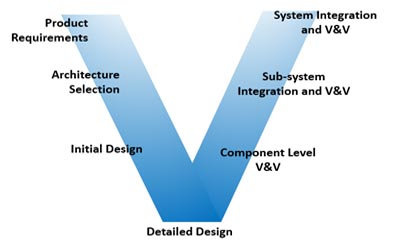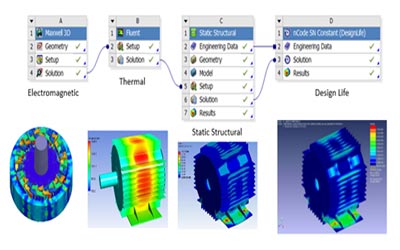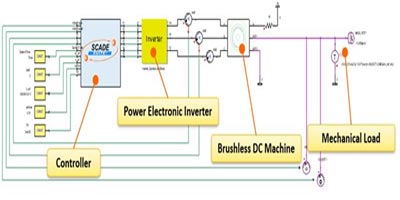Ankit is an expert in area of consumer appliance with focus on structural, thermal, and electromagnetic reliability. With more than fifteen years of experience, Ankit has been helping organizations to implement simulation base product development, to reduce development cost and come up reliable, safe and smart products.
The consumer appliance industry is growing exponentially, and it is expected to double by FY2025. There is a growing demand for products that can increase comfort and reduce human time and efforts. This is the result of not only the urbanization with growing middle-class economy and busier lifestyle, but also the growing awareness in rural areas.
Consumer Appliance Manufacturing Goals
Consumer expectations from home appliances are quite challenging. While consumer’s requirements from the products are affordability, reliability and a longer life span, they are also conscious about the product’s user-friendliness, compactness, energy efficiency and environmental footprint.
The manufacturer’s key selling points also need to evolve from just being affordable and reliable to incorporate all other customer expectations such as smart, connected and energy efficient products. Apart from customer expectations, manufacturers also need to adhere to requirements related to product certification as well as regulatory requirements.
 Challenges in Product Design
Challenges in Product Design
Appliances continuously undergo wear and tear under its operational condition, and they need to meet the structural reliability criteria to improve its brand value and minimize the warranty cost for the manufacturer. As appliances are becoming more compact, the thermal performance of these devices is an important aspect, failing of which can cause the devices to heat up quickly even under normal operating conditions and this may lead to permanent failures.
To simplify the life and improve the comfort, more and more functionalities are being added to appliances and they are now IoT enabled. The new functionalities need to operate harmoniously in an electromagnetic environment and manufacturers need to make sure that the EMI-EMC aspect of design is taken care of in early product development.
To meet the promise made to the end customer, it is critical that all possible scenarios for the new product are tested before it is launched in market.
Designers are using simulation tools to evaluate alternatives and to refine design early in the process cycle when it is least costly to make changes. The need of physical prototype is also reduced thanks to simulation, resulting in shorter design cycles and quicker time to market.
Simulation Trends
A typical product design process follows the requirement, architecture design, detail design,
verification, and validation process. Based on requirements, an appropriate architecture selection is selected/designed, which defines components and the relation between them. It is followed by an initial concept design and then a detail design.
Historically, for component detail design, engineers performed single physics simulation and optimized the product for the given functionalities. Now, the scope of simulation is expanding from detailed design to architecture selection to virtual V&V. A large number of designs can be studied through simulation at an early stage. Also, through Multiphysics system simulation, a complete virtual verification and validation is deployed.

Simulation has been providing insights for different physics. For example, structural reliability analysis provides insights as to whether an appliance is able to withstand a loading, or sealing performance, or if there is resonance at operating frequency and more. For thermal performance, it helps to understand if the device has adequate cooling or if the device temperature reaches the critical value. Electromagnetic analysis helps to understand how electronics components interact with each other and how the selection of filters or shielding can minimize EMI issue.
As the appliances are getting smart, compact and more functionalities are being added, Multi-physics and system level analysis is no more just an option, it is a must. In real world product environments, multiple coupled physics act simultaneously on designs and Multiphysics analysis are performed to understand how one physics is affecting the other.
Let’s take an example of a motor in a washing machine. The electromagnetic (EM) analysis helps to understand magnetic flux and torque for different loading conditions. The solid and core loss in motor are used as heat input in Computational Fluids Dynamics (CFD) solver to accurately predict the temperature profile in a motor and to come up with better cooling designs. The temperature profile can be transferred back to an EM solver as a feedback to accurately predict flux and torque based on updated temperature dependent material properties. After a couple of EM-Thermal simulation iterations, once the temperature value converges, the temperature profile is also exported to a structural solver for static structural analysis and then to predict motor life. The EM-Thermal-Structural workflow helps to reduce the error margin and predict motor performance in a real-world scenario, i.e. by making sure the output of one physics analysis is used as input for other.

While detailed component level analysis helps to come up with reliable and optimized component designs, it does not necessarily result in optimal performance of the system. In a design validation process, a system level analysis is important to ensure that the component when assembled in a system, works together as expected. Let’s take the example of a washing machine, which has an electric motor, drive circuit, embedded software control, etc. The motor subsystem in a washing machine is designed and optimized considering the cyclic loading and reversal that is caused in a wash cycle. The controller needs to be tuned for the expected system loads. If this is not done correctly, the motor sub system, though designed for delivering very high efficiency, and the overall system will be running on suboptimal operating points resulting in lower efficiency at the system level.
Understanding the system level behavior with tight integration with plant model from accurate 3D physics solver is necessary to have a precise attribute balancing and performance validation on sub-system and system level, resulting in optimization and performance validation of the product as whole.
Whether manufacturing a washing machine or an industrial kiln, simulation-based product development has helped designers to get early insights into product performance during the manufacturing or operational stage. This has also helped to achieve the manufacturer’s goal of affordable, reliable, and smart appliances.



